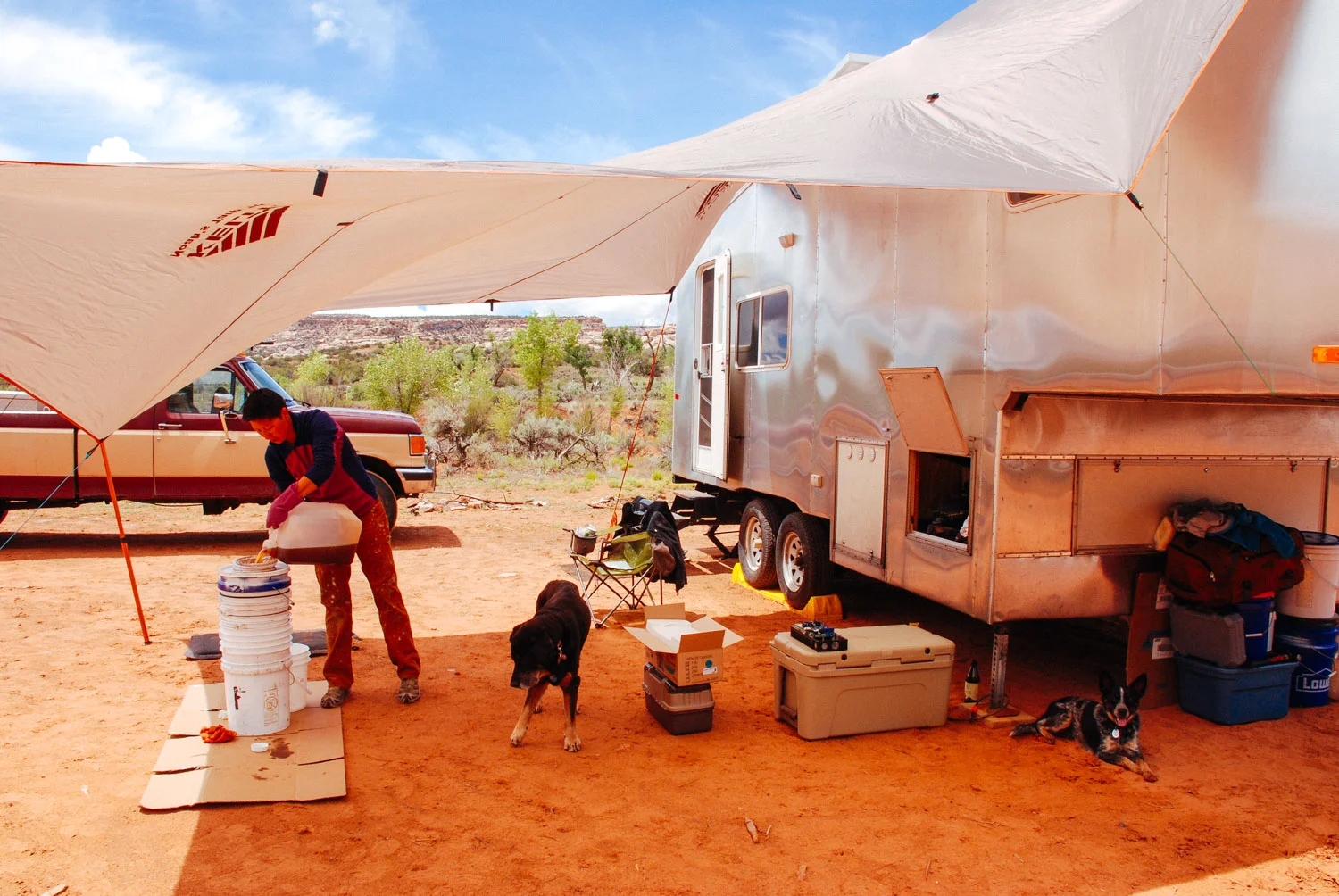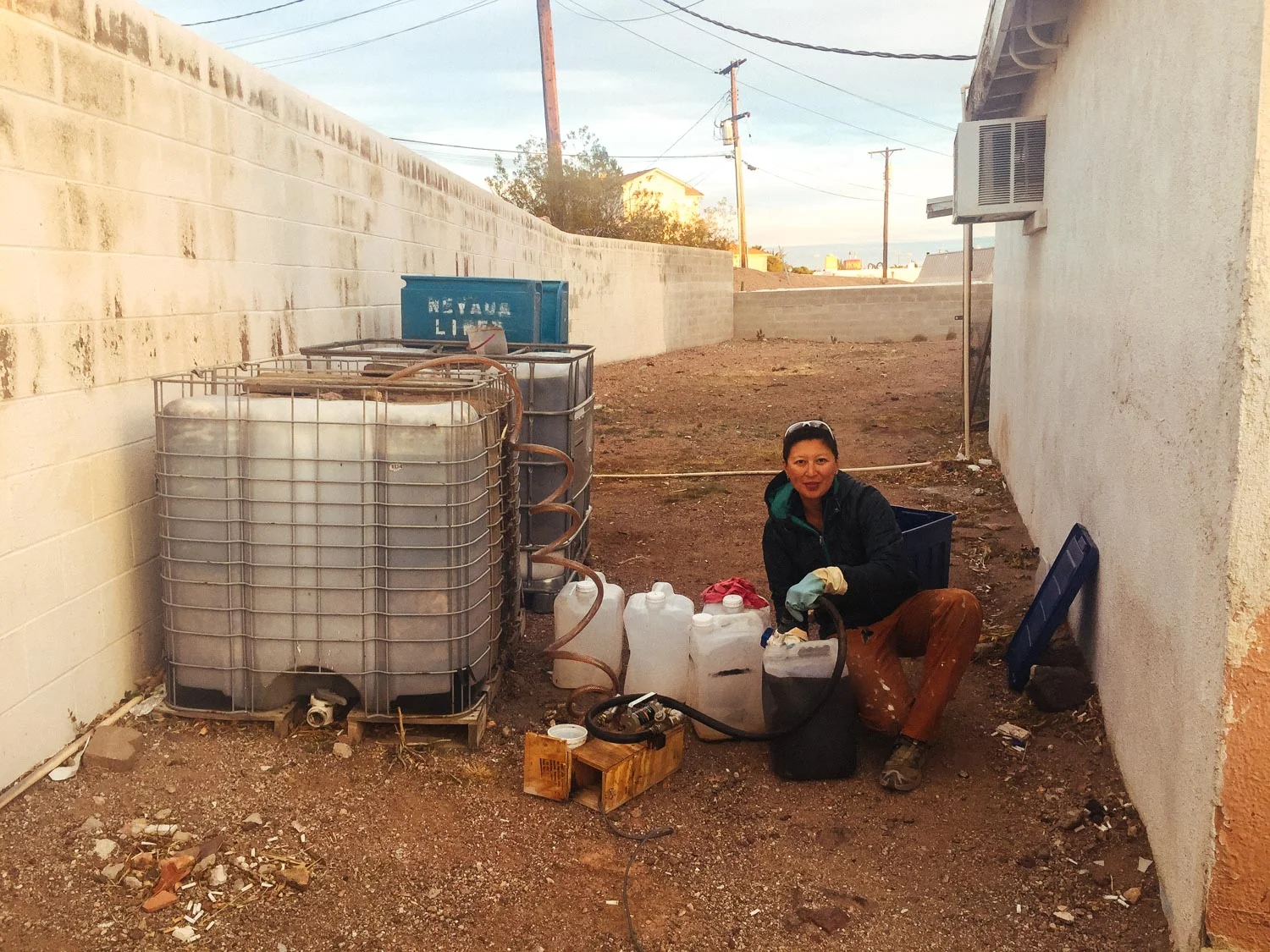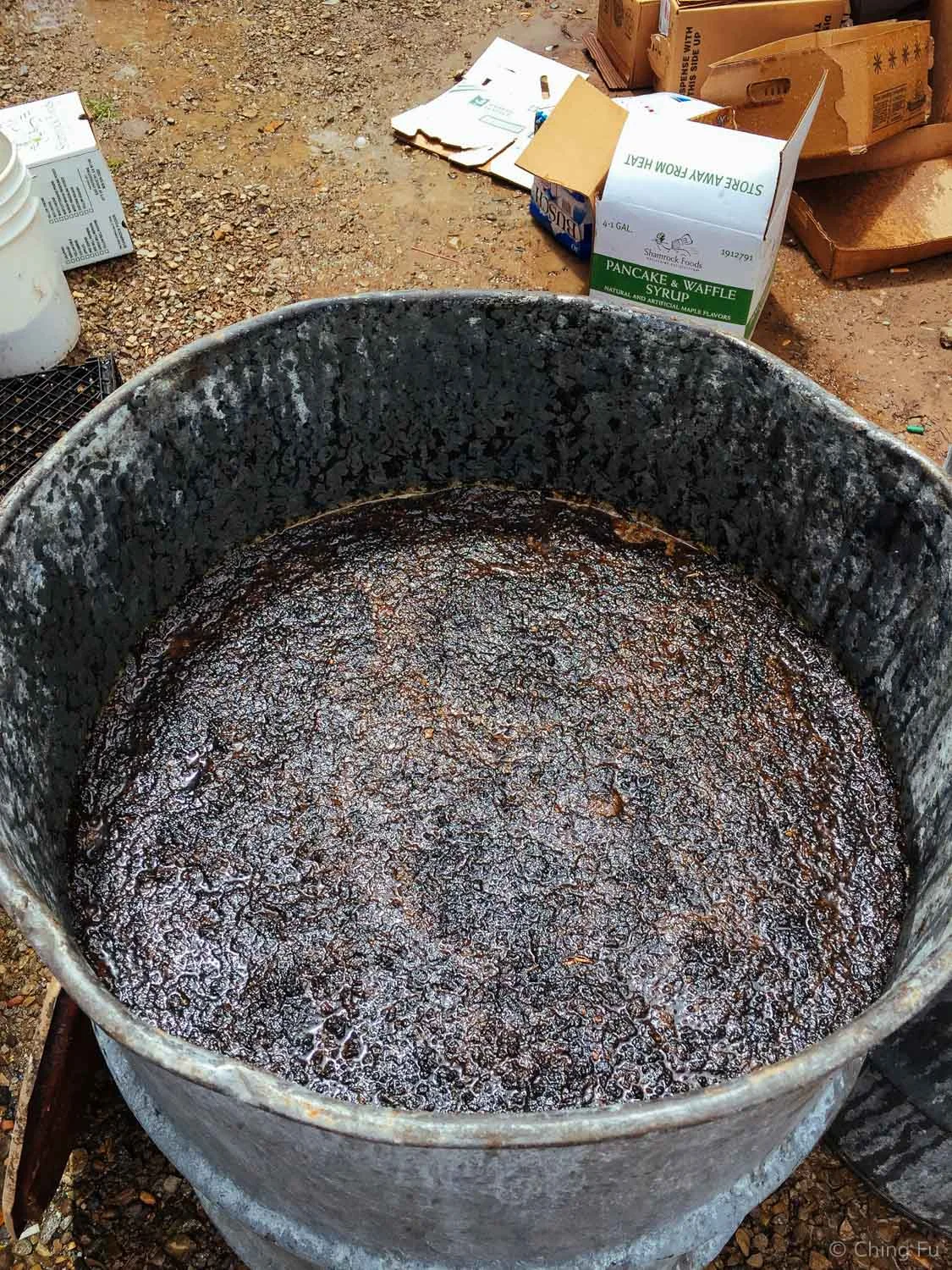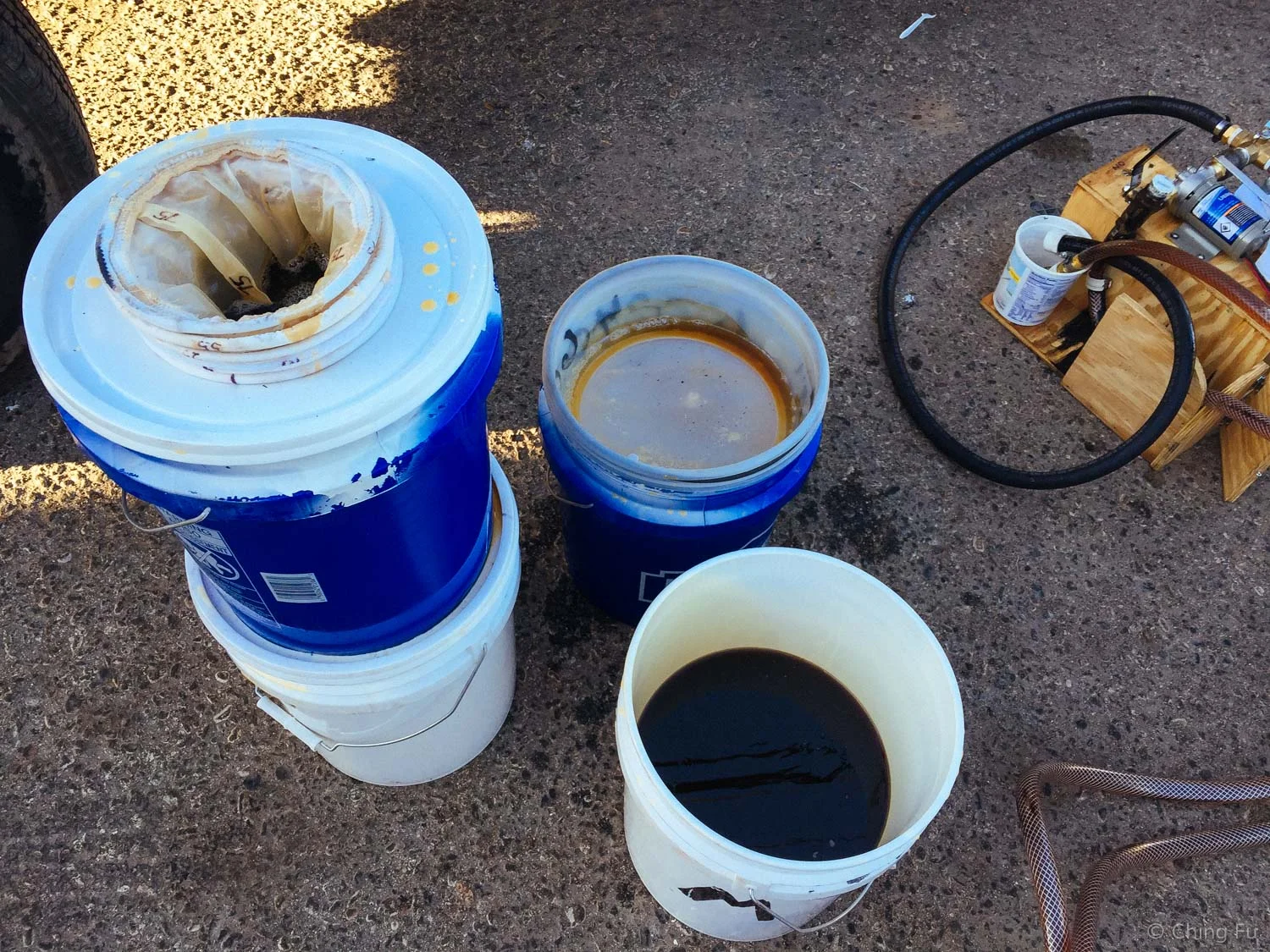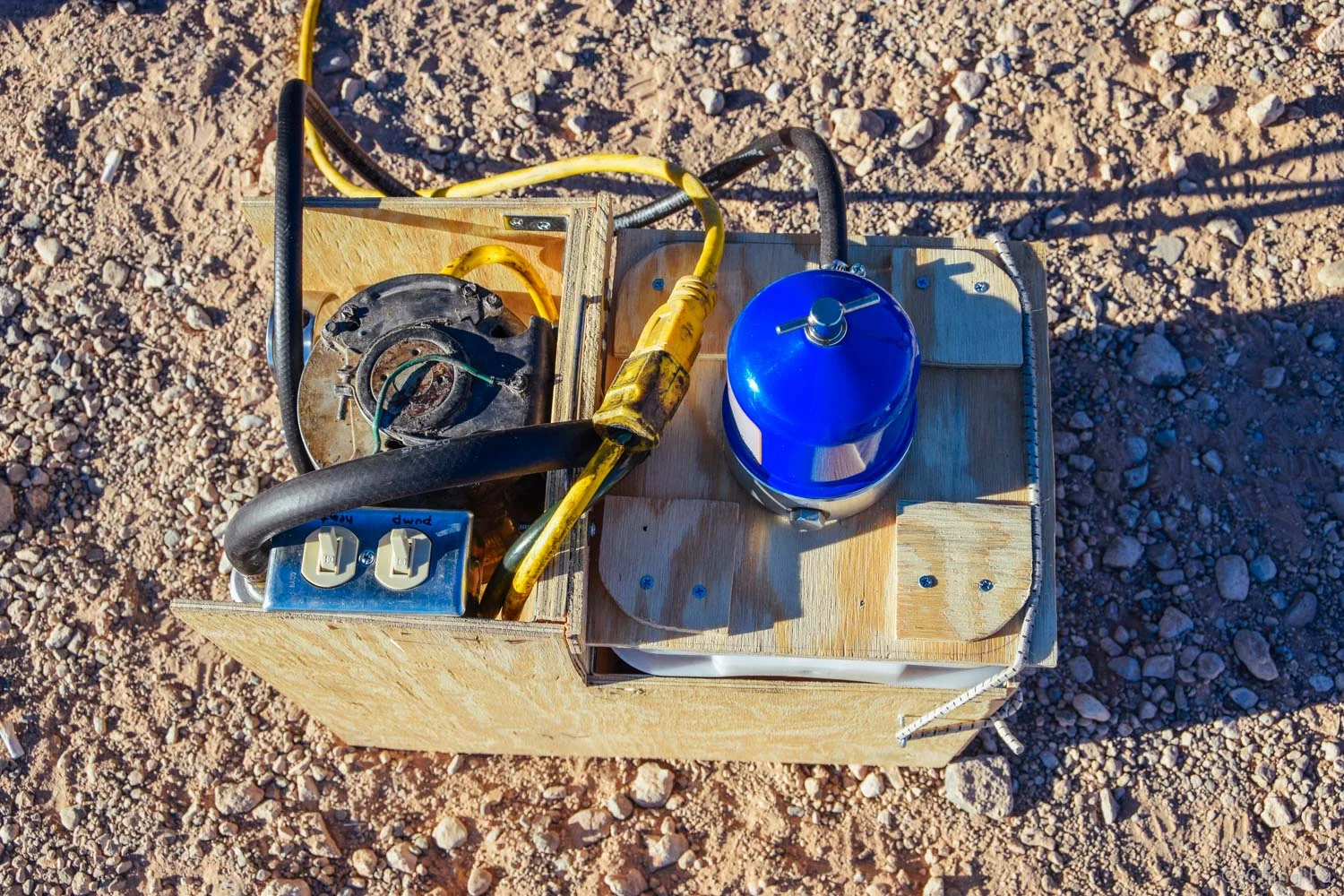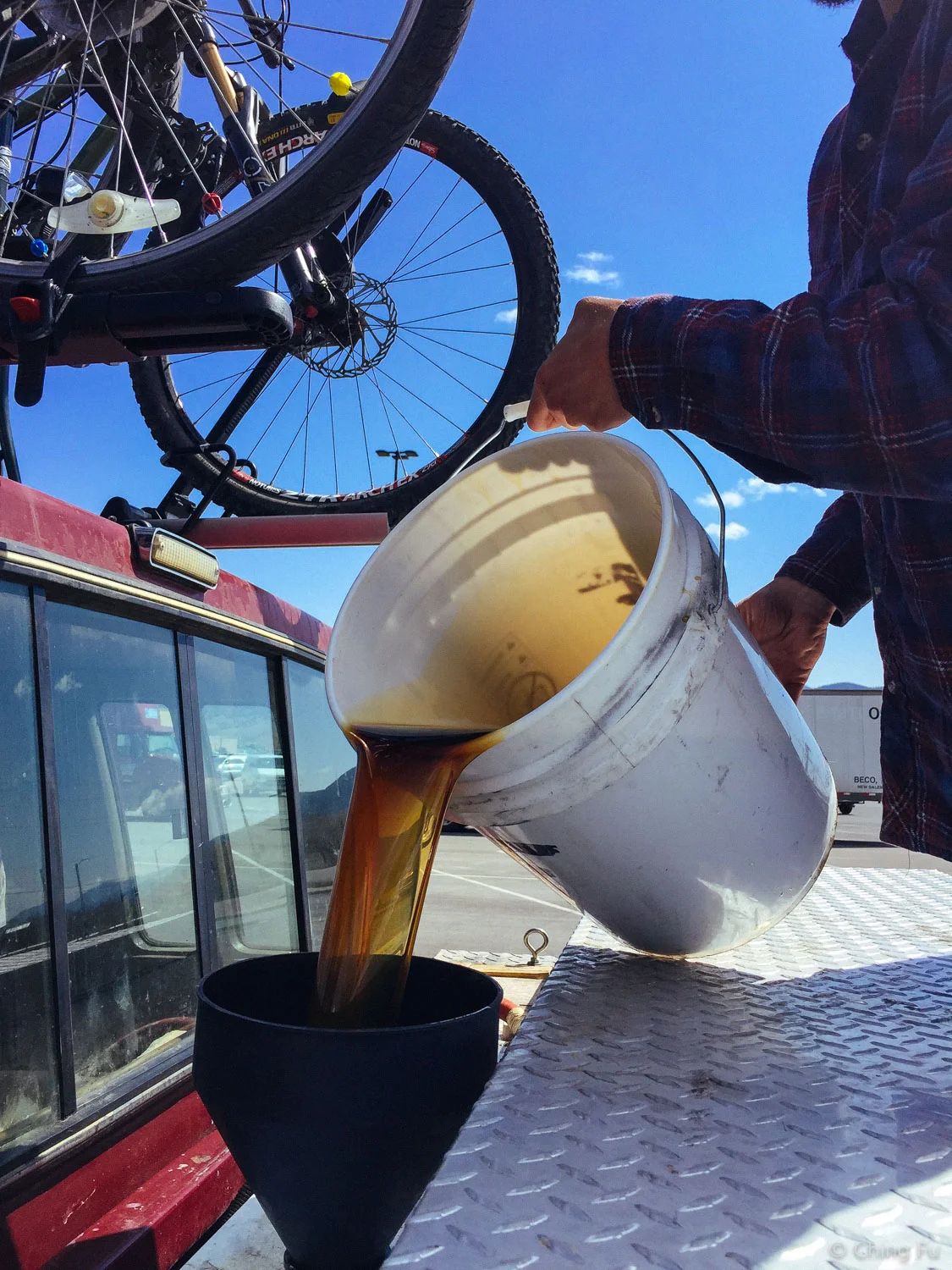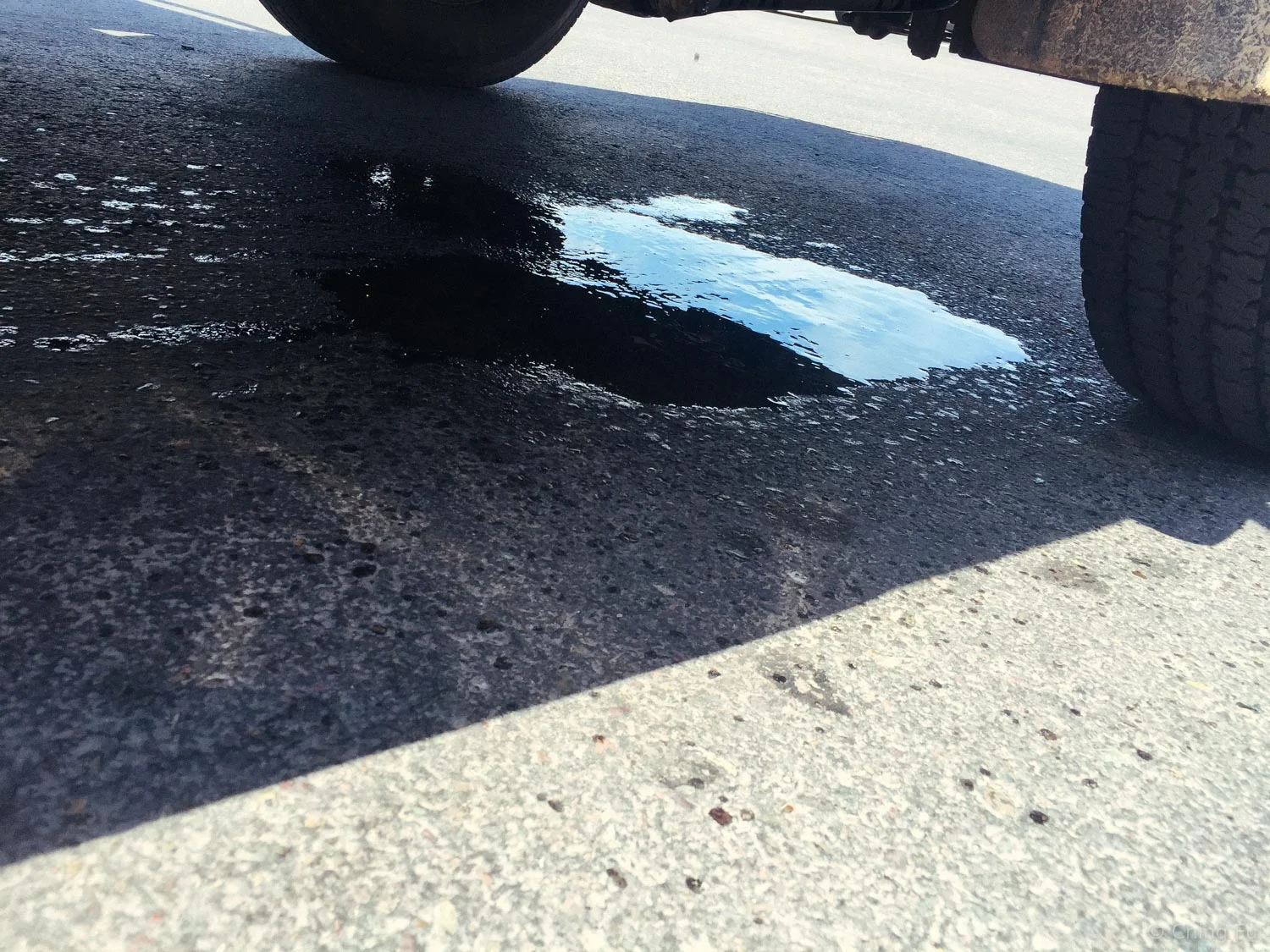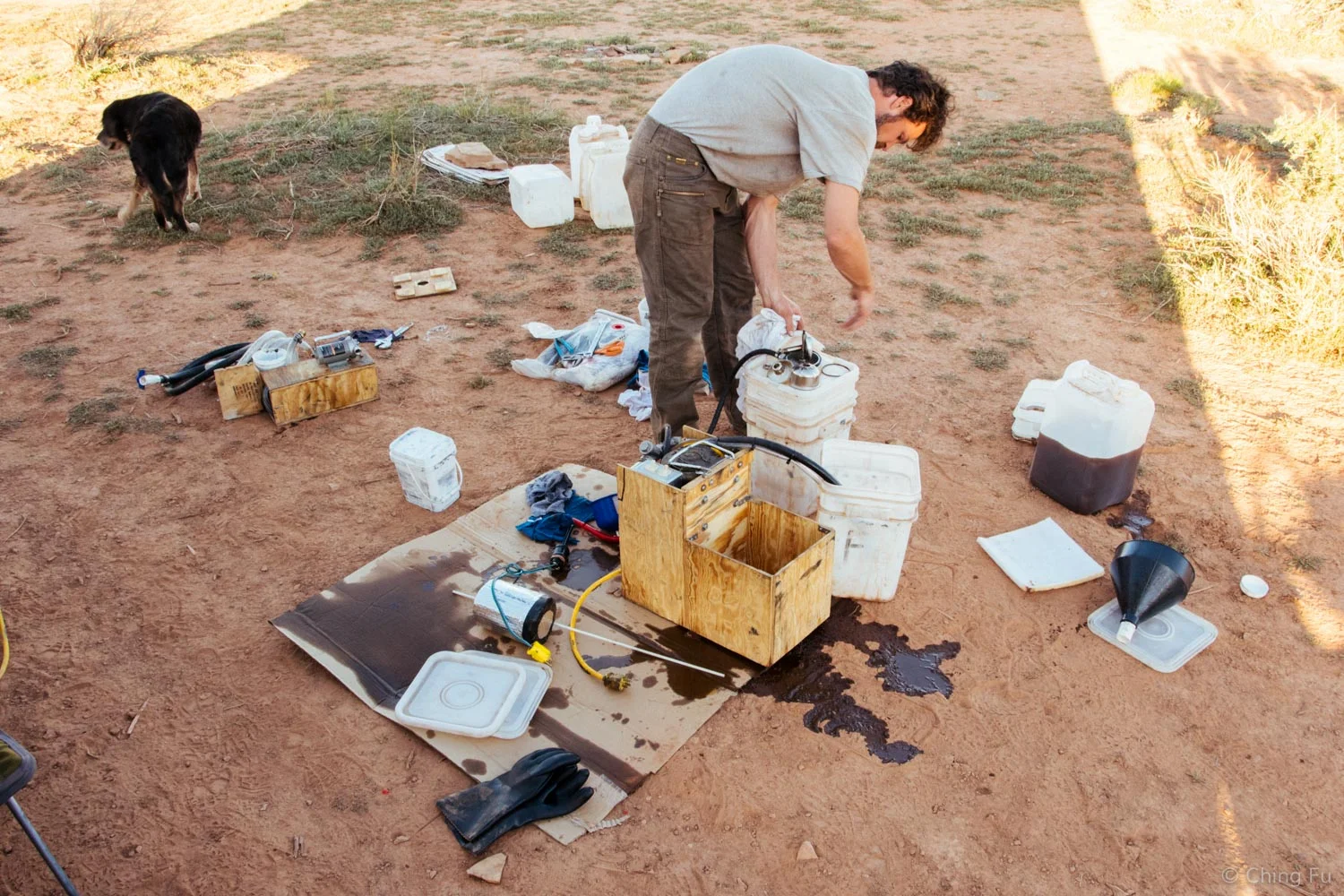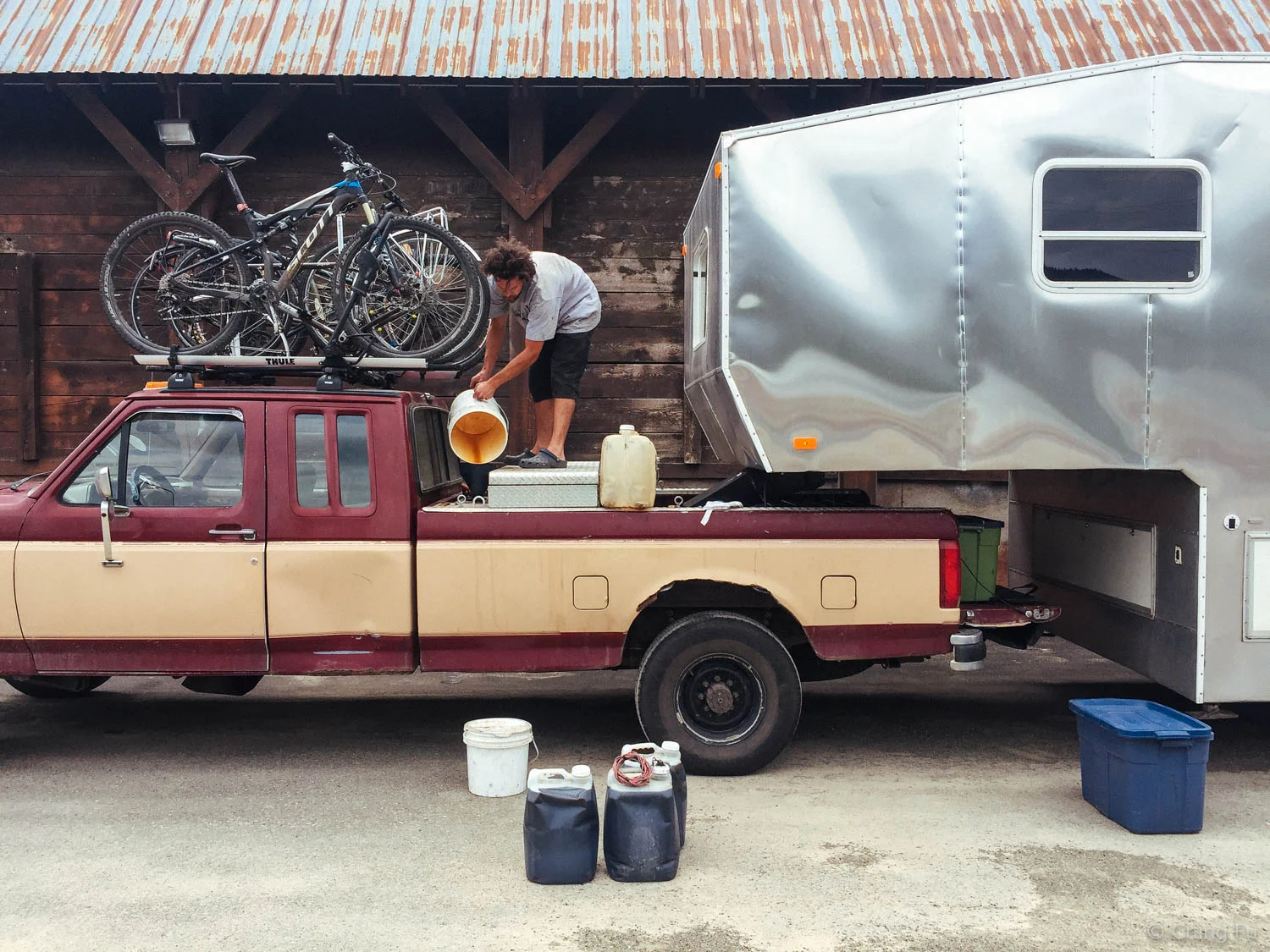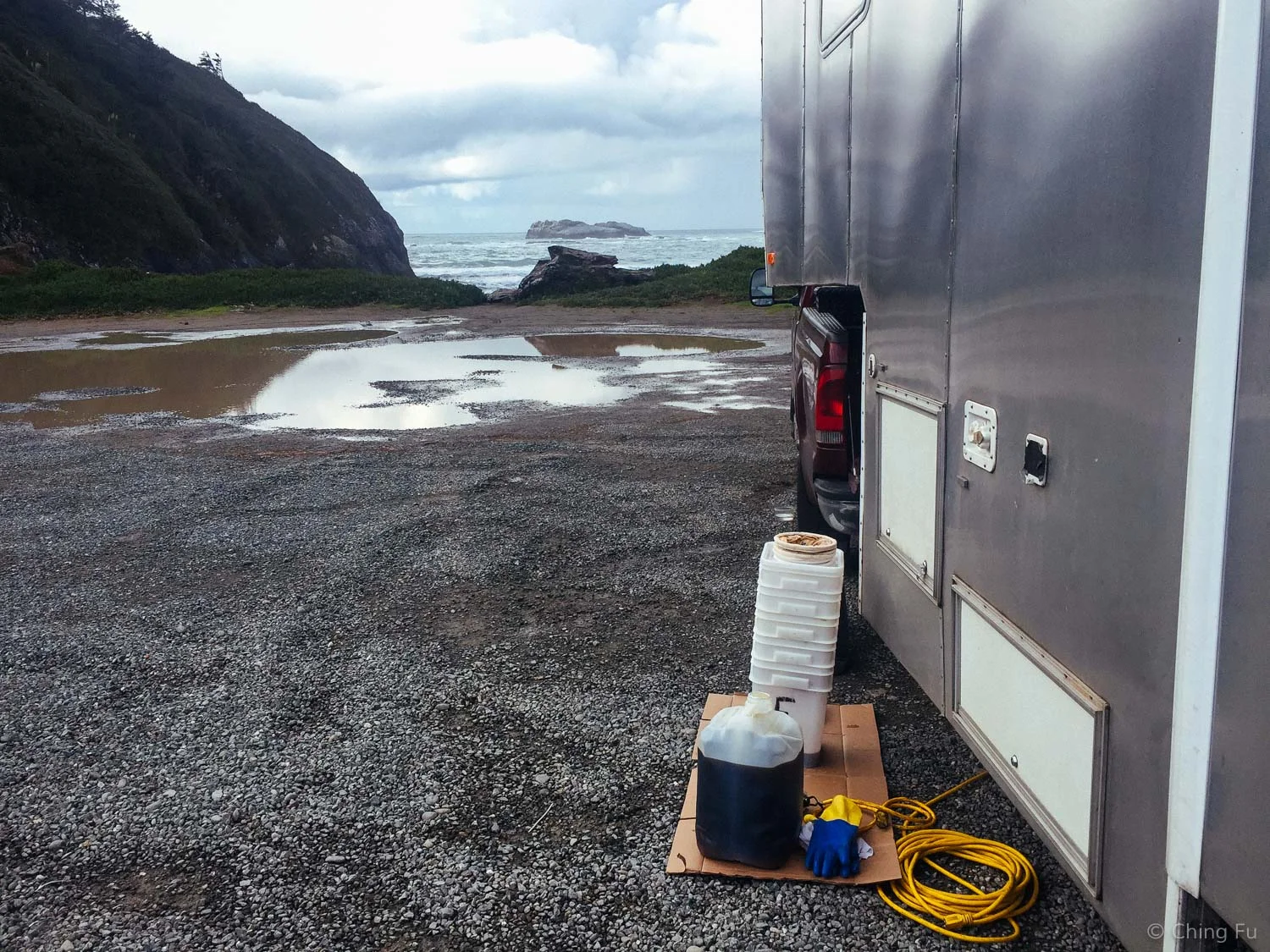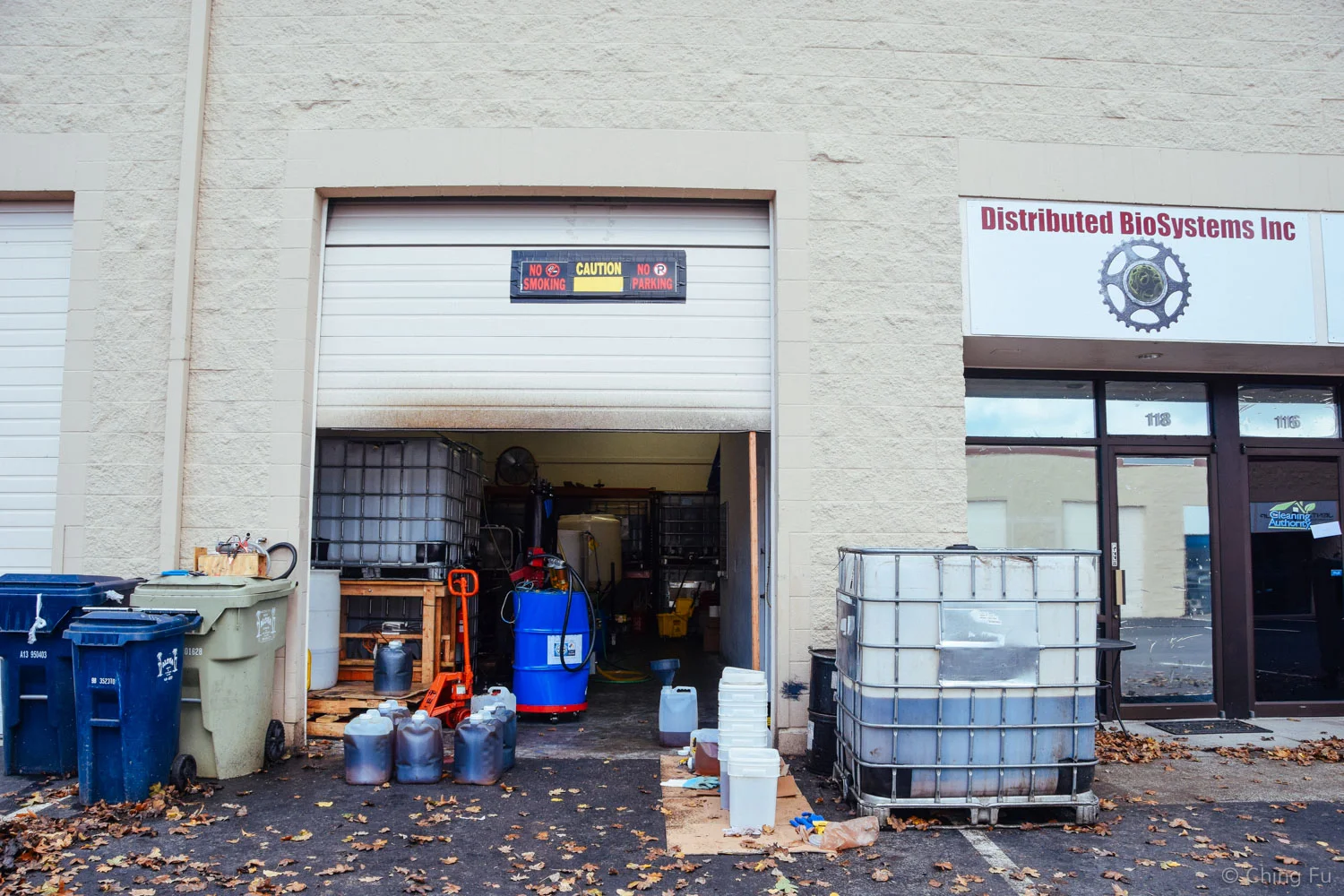The End Of WVO For Us
When conversations of living on the road first came up, the biggest reason I was against the lifestyle was all the driving included. I couldn’t justify exploring all the natural places in North America while burning fossil fuels. It felt wrong and hypocritical. So when Jerud told me about how it’s possible for diesel vehicles to run off straight waste vegetable oil, my mind was totally blown. I adamantly told Jerud that unless we ran our tow vehicle on waste vegetable oil (WVO), we weren’t going to move into an RV. On top of that, we both agreed that we would attempt to live in an RV powered 100% by solar panels (at the time we didn’t know if it was possible).
So it breaks my heart to write this post. But after over a year of running our trucks* on WVO, we’ve chosen to stop. (*The 1991 Ford F-250 we left Asheville with ran on WVO but then had to get replaced – not because of WVO. And our current 1999 Ford F-250 is also converted to run on grease.)
Why would we stop doing something that we were so obstinately for? Something that we believed so deeply in? Doesn’t that make us hypocrites? Honestly, I feel like one. But on the road, there are too many factors that make using a WVO vehicle really difficult.
Filtering WVO while boondocking in Utah.
WVO Is Hard To Get
Ten years ago there was a plethora of free and unclaimed restaurant grease. The majority of the population saw grease as trash. There was a small population of individuals and companies that saw the value in grease and collected it from restaurants who were more than happy to get it off their hands for free.
But then the potential of WVO was realized by the masses, enough so that companies started actually paying restaurants to collect their grease. With legal contracts in place, restaurants aren’t allowed to give WVO away to anyone but the collection company, and most restaurants have a contract. We’ve spent countless days driving around an area asking restaurants for grease only to return home empty-handed. Sometimes the truck is running on grease during those drives; other times we’ve already run out and are using diesel. Riding our bikes instead would be ideal, but we can’t cover the mileage required to hit up all the restaurants in an area.
After multiple days of looking for WVO, we finally got our hands on some. This is what collecting it looks like.
While we knew WVO was going to be harder to get, we naively thought that grease would still be available in small towns. That’s not true. We’ve gone into all kinds of small town restaurants only to be told that they already have a company coming hundreds of miles to pick it up. Or if it’s not a company, then a local individual has already called dibs on it.
We’ve contacted collection companies directly asking if we could purchase unfiltered and unprocessed waste vegetable oil. But getting hold of the right person is near impossible and when we have, they were only willing to sell a tanker truck worth of it at minimum. Um, wonderful but we have no way of storing that. We’ve also left our phone number with restaurants asking the local person who’s collecting their WVO to call us, but we never get a phone call.
We did once receive an email from an individual who wanted to give us their used turkey fryer cooking oil after reading about us in a newspaper.
The upside of WVO being so difficult to get is that it means there are a lot of companies recycling and reusing grease. There are several different things that WVO is reused for: converted into biodiesel; make into other forms of biofuel for heating; animal feed; in one Colorado town we heard the local who was collecting grease was making soap out of it; and we’ve even heard of reusing WVO as cooking oil. So even though we personally can’t burn it as fuel, the WVO is still being used in a way that positively benefits the environment.
Filtering Is Difficult
Grease is gross – there’s no arguing there. But that’s not a reason why we stopped using WVO (although having our belongings covered in grease is a major downside). There’s so much crud in WVO that has to be filtered out or else it’ll ruin the engine of a vehicle. On top of all the food bits and other weird stuff that’s in the grease (cigarette butts, pieces of foil, gum, etc.), water is a major problem for vehicles. Cooking grease gets contaminated with water for various reasons: food that’s cooked releases water; the holding tank isn’t covered properly from the weather; and a method of cleaning restaurant deep fryers is to use water. So water ends up in the holding tanks that we collect WVO from. Water can ruin our truck injectors, which are expensive to replace.
Despite being really desperate for grease, sometimes we just have to walk away from stuff that's too gross to be worth our time and energy.
Our filtering system has gone through many iterations. Our initial setup was a fairly simple sock filter system using just gravity but that did nothing to remove water. Our most recent system includes a centrifuge to tackle the water problem. Grease has to be heated up to a lower viscosity in order to be able to work with it. The hotter and more fluid the grease is, the quicker and easier it is to filter. This means no matter what the filtering setup is, grease always has to be heated up first.
This is what our WVO collection and filtering setup looked like when we first hit the road. The filters on the left are sock filters. We used various micron sized filters to catch all sizes of debris.
Our filtering system is set up to work in batches of 3 gallons. We use an electric water heater element to heat the WVO up to 150°F before running it through the centrifuge. The whole process typically takes 30 minutes, but sometimes longer depending on how cold it is outside (colder = longer to heat up the grease) and how dirty the grease is (dirtier = longer time in the centrifuge).
Our most current filtering setup looks like this. The blue thing on top is the centrifuge.
This setup includes gauges for pressure and temperature.
Our holding tank in the truck bed can carry 37 gallons of filtered grease. That means it would take us 6 hours and 10 minutes to filter 37 gallons. That may not sound so bad, but we can’t ever filter all 37 gallons in one day because the whole filter system runs off electricity - a lot of it (heating uses so much electricity). Since our only source of electricity is the solar panels from the Toaster, we usually only have enough electricity to filter 3 batches of grease a day (which is 9 gallons), still be able to use the amount of electricity we do on a normal day, and have enough electricity for the next day in case it’s not sunny. That means it would take us about 4 days to filter enough grease for one tank of fuel for the truck. Assuming those were all sunny days. And that doesn’t include the amount of time (and fuel) it takes to find grease.
So, the whole filtering process is time and energy consuming.
Pouring filtered grease into our 37-gallon holding tank.
Things Always Break
Having a vehicle that drives on WVO is always a little bit experimental. Even if you spend the extra money to purchase a WVO kit (Jerud pieced ours together on his own), there’s a learning curve. It’s always up to you to figure out the problems. You can’t drop your vehicle off at an auto-repair shop or dealership if your WVO system goes bonkers. It’s up to you to get under the vehicle or elbow deep into the guts under the hood to figure out what went wrong. This is time-consuming and stressful, especially living on the road full-time and having only one vehicle. If something happens to the truck then we’re stuck until it gets figured out. Also, a WVO system requires some specialized parts. Not items you can just walk into an Advance Auto store and grab off the shelf.
Our most recent incident was in Missoula, Montana. We pulled into a grocery parking lot to find out that one of our WVO hoses had burst and we were leaking grease everywhere. While our truck still runs off diesel (some diesel is still required to be able to run WVO) the torn hose also meant our diesel would leak out (because of the way Jerud created our WVO system). So we had to carefully limp our way back to where we were staying to fix the problem. Luckily, we were staying at a friend’s place and were able to use her car to buy the necessary parts to fix the problem.
If it’s not something on our truck WVO system that messes up, then it’s something in our filtering system. Either way, it’s never simple and straightforward. Even when we think we’ve got all the kinks worked out.
This is what filtering WVO ends up looking like no matter how tidy we try to keep it. Something went wrong on this day and Jerud had to troubleshoot.
Alternative Solutions
Does that mean driving a WVO vehicle is out for good? While we’re on the road, yes. But maybe not if we settle down again. Two of the issues mentioned above are maybe not be as big of a deal when we’re not on the go all the time. Living in one location means there’s a chance we can build a relationship with a local restaurant and take their grease instead of always looking for new restaurants. Being stationary also means that we can let the grease we’ve collected sit and settle so that it’s easier to remove water and unwanted solid stuff.
Jerud has looked into so many alternative solutions to driving on fossil fuels. A great option would be an electric vehicle. But technology is still lagging in this field. The only electric truck available only has a 100 – 145 mile range and limited payload. This truck can be reserved but it’s not in production yet. It’ll be at least a few more years before an electric truck is a viable option, and even then, it won’t be pulling a fifth wheel.
We left Missoula, MT with enough WVO that we were able to fill our tank on our way to Seattle, WVO. We drove the entire way using just WVO!
Julie, one of our readers, brought to our attention an alternative fuel that has us extremely excited! It’s called Diesel HPR (High Performance Renewable). It’s sustainable because it’s made from renewable biomass sources including, but not limited to WVO, like nutshells, coconut husk, hardwood and softwood chips, and corn cobs. (source)
Diesel HPR is like biodiesel in the sense that it starts with a biomass source, goes through chemical processing, and results in an alternative fuel. The difference is that Diesel HPR burns just like diesel, unlike biodiesel, which isn’t technically diesel fuel (more on that below). The Diesel HPR is chemically diesel; this means it can be used in any diesel vehicle (without converting it like necessary with WVO) and users can use unmixed Diesel HPR unlike biodiesel.
The main downside to this renewable diesel is that it’s only available in a few locations in California through a company called Propel. We can’t wait for it to be more readily available.
On this travel day our WVO tank was getting close to empty so we had to stop somewhere and filter more grease.
Why Not Use Biodiesel
Unlike Diesel HPR, biodiesel can only be made from WVO. It goes through an intricate chemical process to become biodiesel (this was a main reason why we chose not to make our own biodiesel and stuck with WVO). The biggest downside of biodiesel is that you can’t use straight biodiesel because it gels up at a higher temperature than diesel (it’s not usable in cold weather). That’s why all the biodiesel available at a gas station is labeled B20. This means only 20% of the fuel is biodiesel while the rest is just straight diesel. Yes, biodiesel is still better than using regular diesel, and we fill up our tanks with biodiesel when it’s available. But it’s not good enough to satisfy our environmental goals to stop relying on fossil fuels. Biodiesel isn’t the final solution to our and the world’s fuel problem.
We came across Distribued BioSystems, an independent company making biodiesel in Oregon. Dennis and Tracy, the owners, were kind enough to let us buy unfiltered WVO from them and filter it on-site using our equipment. This was a big deal because we had given up finding any grease in the Portland area.
We would love to keep on using WVO if it were viable. Right now we feel guilty every time we get in our truck. A lot of thought is put into where we drive to and trying to get the most out of a trip into town or an outdoor area. So you may be wondering at this point – since we’re no longer driving on WVO does that mean we’re going to stop traveling around in an RV? No, we’ve fallen too much in love with this nomadic lifestyle to settle down. So does that make us hypocrites? I think so. I can give you all kinds of numbers and reasons why my life on the road is better than my previous stationary life. But when other RVers have told me theirs, I just scoffed at them. Except it's not fair on my part. It’s true that living in an RV overall has a smaller footprint than a regular house. And there are so many variables that need to be looked at and taken into consideration, such as previous house size, energy usage, water usage, driving habits, flying habits, the style of RVing, etc. But from our calculations, Jerud and I know that the amount of fossil fuels used for transportation has a much bigger impact on the environment than the size of a house. So we’re still researching and trying to figure out the best way we can live on the road and not kill the world.
GreaseCar CoPilot Manual
Since it’s been requested a few times in the comments of this post, I’m putting up my pdf of the manual for the Greasecar CoPilot for download. For those of you using that system, I hope it helps and good luck!
Download the CoPilot manual here.

